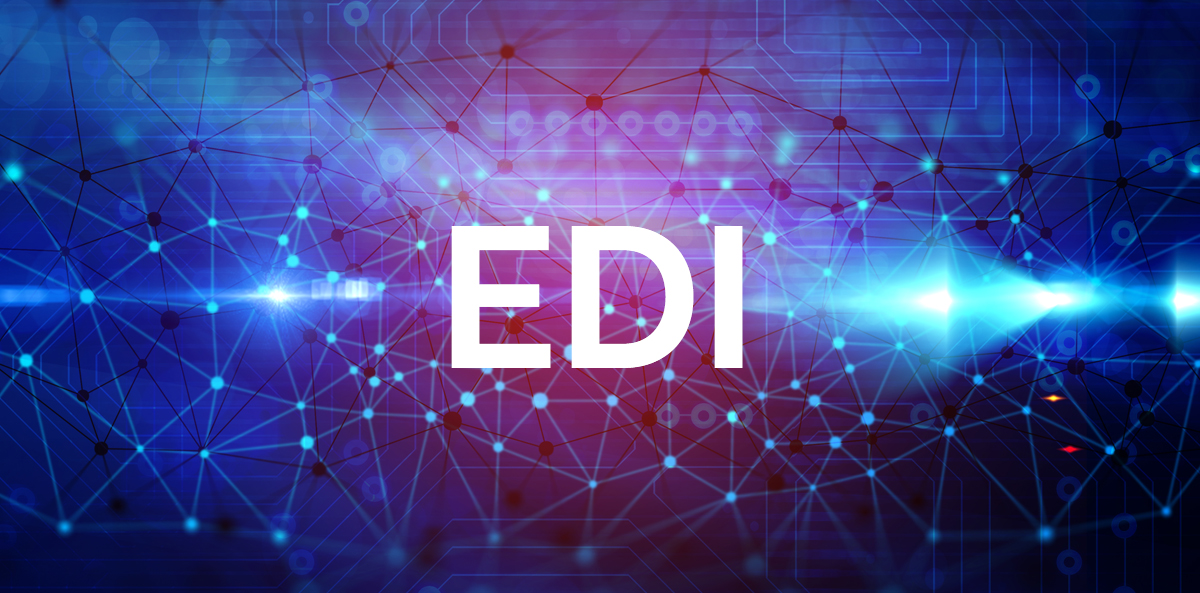
EDI – efficient communication in the supply chain
Today’s market forces employees to continuously improve their competences and develop new skills. To become an expert in your branch you need to continuously develop yourself and acquire new skills. A similar relationship can be noticed in the functioning of companies. Companies which not only want to remain on the market but, above all, strengthen their position on it, should constantly develop themselves and improve all the aspects of their functioning.
With the help comes EDI which increases efficiency in many business areas. For several months Etisoft has been using the implemented EDI system actively while encouraging customers to cooperation with the use of this very tool.
What is EDI?
EDI (Electronic Data Interchange) is a direct exchange of documents between the systems of cooperating companies. Thanks to EDI companies can send and receive documents which they send to one another.
When companies agree to send messages electronically, they enter a new dimension of cooperation. The key for successful operation of EDI between companies is to prepare for the process.
In a nutshell, the process is illustrated by the following graphic image:

The message sent by the ordering party is loaded to the system of the company which undertakes to deliver the order. The message contains the required information such as the date of delivery, quantity ordered, delivery address and other necessary data.
Thanks to that, business cooperation and collaboration becomes much simpler and, above all, automated.
Benefits of data exchange through EDI
One of the greatest advantages of EDI is reduction of time spent by employees on handling processes, e.g., sales transactions. Employees do not have to enter customer order data into the ERP system and can take on new tasks.
The possibility of longer planning horizon is another advantage of the introduction of EDI. The loaded documents take into consideration customer expectations of several months. This makes it possible to optimize the deployment of machines and employees.
EDI at Etisoft
We exchange more than five thousand documents monthly with our customers via EDI.
Six of our customers are connected to EDI, which translates to 89 facilities. These are customers with the highest number of schedules / forecasts and shipping confirmations / ASNs.
“The basis of EDI operation is the right data parametrization, e.g., compatible units, delivery addresses, etc. each time the challenge are the new projects which translate to newly implemented items in the system,” Agnieszka Stelmach, Customer Service Manager at Etisoft, says. “It is not as if the system operates without our participation and we can rely on automation completely. As a customer service office, we must verify some of the data in a traditional manner. However, it takes us definitely less time and enables us to eliminate errors and develop new skills, such as analytical ones. Unification of service, in turn, enables the task to be handed over seamlessly to another person implemented in EDI operation.”
Another advantage of EDI is elimination of human error and speed of exchange of documents. The documents are sent between the systems automatically and loaded there immediately afterwards. This is confirmed by Klaudia Laska-Töller, shipping logistics manager at Etisoft, “Before the introduction of EDI, each shipment had to be recorded by us in the customer’s external systems. It was quite labour-consuming and required knowledge of each of them. Now the registration happens outside of us, so to speak. The data are sent automatically which means that the customer receives information required for the goods to be taken into the warehouse without undue delay.”
Popular types of EDI messages
Thanks to the exchange of messages via EDI, companies gain an opportunity to load various documents. The most popular messages that Etisoft exchanges with other companies include order schedules and shipping confirmations.
Order schedules
Customers who send order schedules via EDI provide an estimated plan even up to several months ahead. The schedules are updated several times a month. Thanks to that the supplier can optimally plan the load on the machines and order the appropriate number of materials necessary for production without having to store them in an excessive manner. Additionally, customers can be certain that the supplier will be well prepared for the implementation of the schedule and will deliver the goods in accordance with the plan.
Shipping confirmation
Another message the supplier sends to their customer is a shipping confirmation. Thanks to this information the customer is informed when and in which quantity they will receive the expected shipment. Additionally, the message may contain information on the packaging structure which will make it easier to receive the order in the customer’s warehouse.
A step towards Industry 4.0
The ERP system can analyze data from order to sale, including shipping and invoicing information. EDI makes it possible to integrate supplier and customer systems. What is more, by creating a network in which messages are exchanged, companies take another step towards Industry 4.0,
Cooperation of companies within EDI ensures full integration of information, and thanks to the cooperation with the EDI supplier it is possible to send tailor-made messages. This is because it is possible to send messages between business partners with different ERP systems.
EDI has an amazing potential because it connects the IT world with production. By creating customer-supplier networks and electronically exchanging data between partners, suppliers can manufacture products more cost-efficiently and respond to customer needs more quickly.
Industry 4.0 means that people are being relieved by machines. However, we should remember that the purpose is not to replace people but to take work which can be automated away from them. People are the most important, and thanks to the implementation of EDI they receive great support and possibility to take on new tasks.